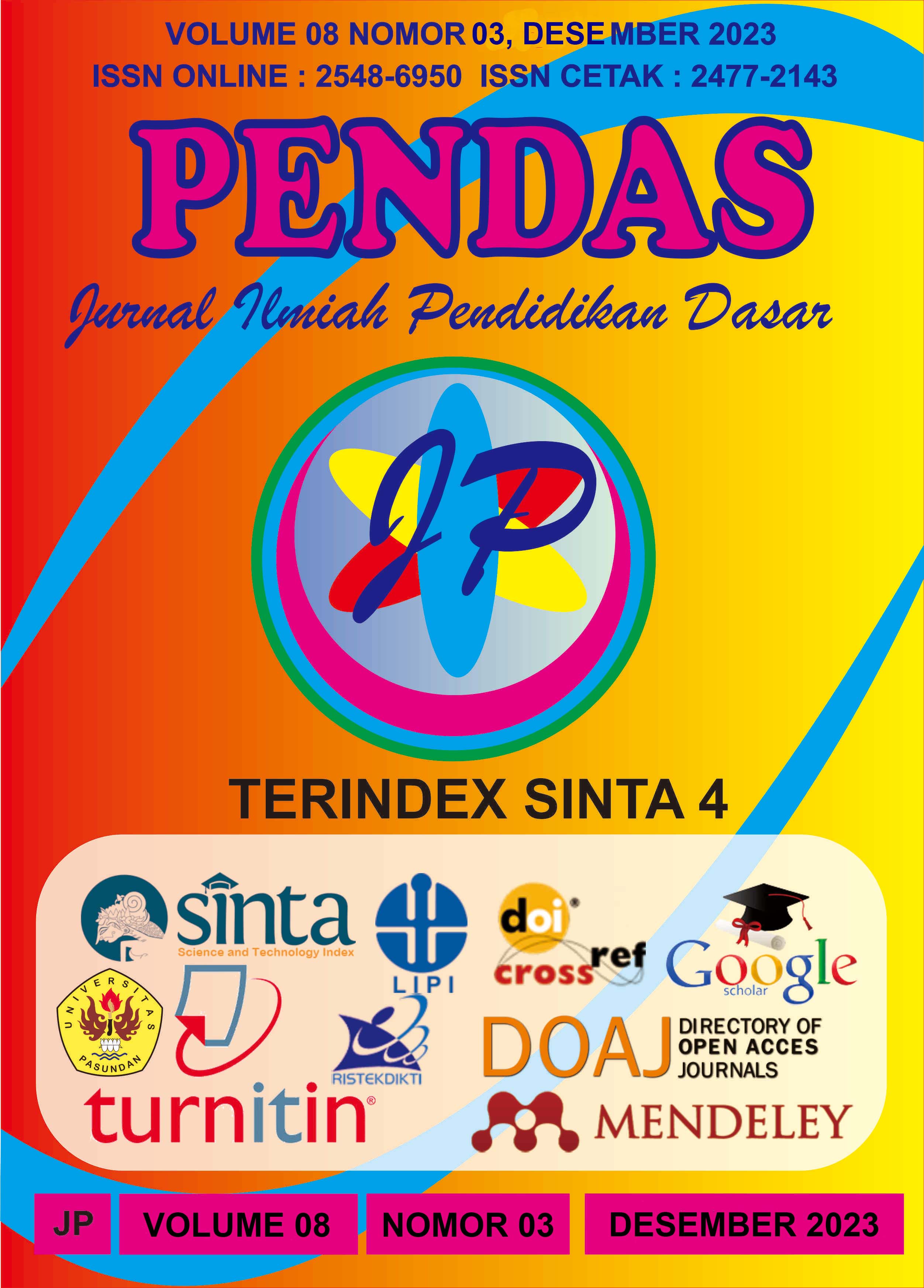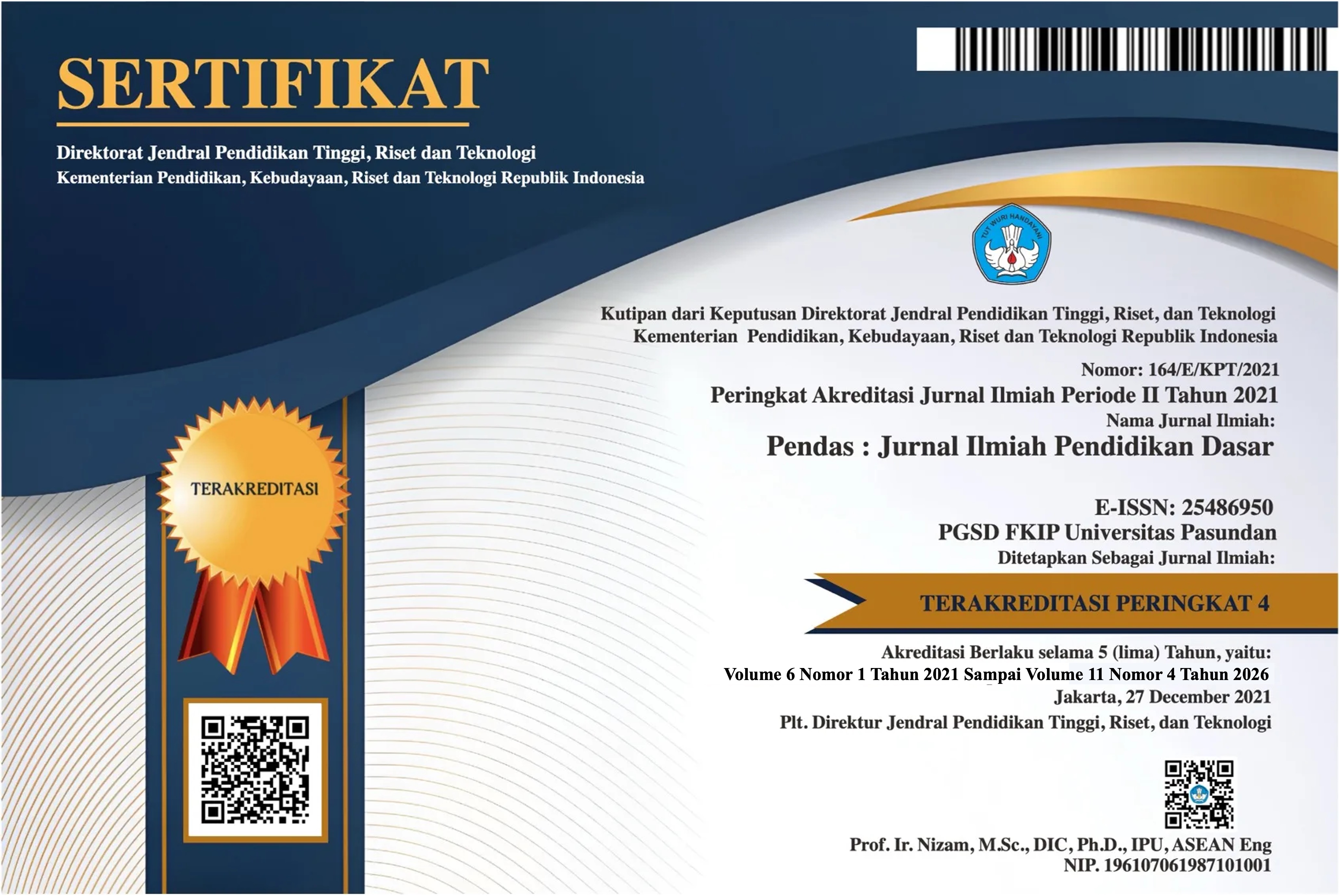PENERAPAN MODEL PEMBELAJARAN THINK ALOUD PAIR PROBLEM SOLVING (TAPPS) UNTUK MENINGKATKAN KEMAMPUAN PEMECAHAN MASALAH MATEMATIS DI SEKOLAH DASAR
DOI:
https://doi.org/10.23969/jp.v8i3.10599Keywords:
building space, students' mathematical problem solving ability, Think Aloud Pair Problem Solving (TAPPS) learning modelAbstract
This research was motivated by the low ability to solve mathematical problems in class V students at UPT SDN 008 Laggini. The aim of this research is to describe the increase in students' mathematical problem solving abilities in geometric material by applying the Think Aloud Pair Problem Solving (TAPPS) learning model in class V UPT SDN 008 Laggini. This research method is classroom action research (PTK) which is carried out in two cycles. Each cycle consists of two meetings and four stages, namely planning, implementation, observation, reflection. The research subjects were 22 class V students, with 8 male students and 14 female students. Data collection techniques in this research used observation, test and documentation techniques. This research instrument uses learning tools, student worksheets and observation sheets. Based on data analysis, it can be seen that there is an increase in students' mathematical problem solving abilities. In pre-cycle activities, the class average score was 45.89, increased in cycle I meeting 1 to 73.16, increased in cycle I meeting 2 to 81.16. The average score in cycle II meeting 1 was 81.39 and increased in cycle II meeting 2 to 82.89. Thus, it can be concluded that, by implementing the Think Aloud Pair Problem Solving (TAPPS) learning model, it can improve the mathematical problem solving abilities of class V students at UPT SDN 008 Laggini. Keywords: Think Aloud Pair Problem Solving (TAPPS) Learning Model, Students' Mathematical Problem Solving Ability, Building Space.Downloads
References
Aminah, L. lusiyana, Rahayu, W., & Salsabilla, E. (2016). Penerapan Teknik Pembelajaran Think Aloud Pair Problem Solving (TAPPS) Untuk Meningkatkan Kemampuan Pemecahan Masalah Matematis Pada Pokok Bahasan Kubus Dan Balok di Kelas VIII-5 SMP Negeri 27 Jakarta. 57–66.
Ananda, R. (2017). Penerapan Model Kooperatif Tipe Number Head Together (NHT) Untuk Meningkatkan Hasil Belajar IPS Siswa Kelas IV SDN 003 Bangkinang Kota. Jurnal Handayani, 7(1), 47-57.
Aprinawati, I. (2017). Penerapan Model Pembelajaran Story Telling untuk Meningkatkan Keterampilan Berbicara Siswa Sekolah Dasar. Jurnal Basicedu, 1(2), 42-51.
Artika, T., & Karso. (2019). Meningkatkan Kemampuan Pemecahan Masalah Matematis Siswa dengan Menggunakan Metode Pembelajaran Thinking Aloud Pair Problem Solving (TAPPS). Prisma, 8(2), 191–200. https://jurnal.unsur.ac.id/prisma/article/view/791.
Aulia, T., Nurcahyono, N. A., & Agustiani, N. (2022). Penerapan Model Pembelajaran Thinking Aloud Pair Problem Solving ( TAPPS ) Terhadap Kemampuan Pemecahan Masalah Matematis Siswa SMP Ditinjau dari Self Efficacy. 06(03), 2816–2832.
Cahyani, S. D., Khoiri, N., & Setianingsih, E. S. (2019). Pengaruh Model Pembelajaran Creative Problem Solving Terhadap Kemampuan Pemecahan Masalah Matematis Siswa. 7(2), 91–98.
Fadhilaturrahmi. (2017). Penerapan Pendekatan saintifik untuk meningkatkan Kemampuan Komunikasi Matematik Peserta Didik di Sekolah Dasar. EduHumaniora : Jurnal Pendidikan Dasar, 9(2), 109-118
Kusuma, Y., Y. (2020) Meningkatkan Hasil Belajar Siswa dengan Menggunakan Model Pembelajaran Problem Based Learning Di Kelas III Sekolah Dasar). Jurnal Basicedu, 4(4).
Lestari, Hartawan, & Ariawan. (2019). Pengaruh Model Pembelajaran Kooperatif Tipe TAPPS Berbantuan LKS Open-Ended Terhadap Kemampuan Pemecahan Masalah Siswa Kelas XI MIPA. X(1), 2599–2600.
Marta, R. (2018). Penerapan Model Kooperatif Tipe Nominal Group Untuk Meningkatkan Hasil Belajar Matematika di Kelas IV Sekolah Dasar. Jurnal Basicedu, 2(1), 77-86.
Santi, C., Helmon, A., & Sennen, E. (2021). Pembelajaran Pemecahan Masalah Matematika di Sekolah Dasar. 2(2), 31–40.
Sari, A. D., & Noer, S. H. (2017). Kemampuan Pemecahan Masalah Matematis Dengan Model Creative Problem Solving ( CPS ) Dalam Pembelajaran Matematika. 245–252.
Surya, Y.,F. (2017). Penerapan Model Pembelajaran Problem Based Learning Untuk Meningkatkan Hasil Belajar Matematika Siswa Kelas IV SDN 016 Langgini Kabupaten Kampar. Journal Cendekia: Jurnal Pendidikan Matematika, 1(1).
Widodo, S., & Kartikasari. (2017). Pembelajaran Pemecahan Masalah Matematis Siswa Sekolah Dasar Dengan Model Creative Problem Solving (CPS). Pembelajaran Pemecahan Masalah Matematis Siswa Sekolah Dasar Dengan Model Creatif Problem Solving (CPS). Jurnal Pendidikan Matematika, VI(1).
Downloads
Published
Issue
Section
License
Copyright (c) 2023 Pendas : Jurnal Ilmiah Pendidikan Dasar

This work is licensed under a Creative Commons Attribution 4.0 International License.



















